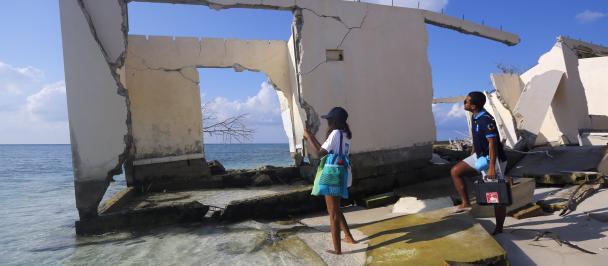By 2050 two out of every three people are likely to live in cities with continued growth in urbanization across the world, especially Africa, and with 40% of that growth likely to take place in slums. Fifteen of the world’s twenty largest cities, all of which have a population of more than 10 million, are located in coastal areas threatened directly.
The changing climate, an increased intensity and frequency (not to mention unpredictability) of storms and cyclones, worsening seasonal floods and the slow-creep of sea-level raise, all contribute to undermining the resilience of these fast-growing cities. In some countries the risks are huge. And urban floods in developing countries, where slums are prevalent and protective infrastructure sometimes weak, have wreaked havoc, in Manila, Rio de Janeiro, Chennai, and many more.
With population growth comes massive needs in terms of infrastructure, with estimates that governments will have to spend more than US$70 trillion on critical areas like road and rail transport telecommunications, water and energy before 2030. And while this infrastructure is critical to maintain economic growth, and provide services to citizens, it may actually add to risk. India has four of the 20 cities most vulnerable to flooding right now, and by 2030, with growth and with investment, its US14.3 billion exposure to disaster risk could increase to more than US$150 billion.
For UNDP the critical issue is one of risk, and in particular ensuring that development is risk-informed. For cities, this means ensuring that the much-needed critical infrastructure to deliver on people’s needs and aspirations and to achieve the Sustainable Development Goals (SDGs) must be underwritten by a full understanding of the critical risks to that infrastructure, and how that infrastructure could contribute to risk, if not planned and implemented correctly.
On the one hand this is already built into UNDP’s work, in terms of our long-standing disaster risk reduction programmes, and in our work on resilient recovery; and this is being enhanced, becoming more central to our capacity development services to government.
But risk-informed infrastructure development is also about new work and new relationships, looking ahead to that very high bar set by the SDGs. We are working with the insurance industry to integrate their expertise on risk modelling into the planning and implementation of new infrastructure. With BlackRock and other partners, we are working on new financing instruments for resilient infrastructure that actually have built into them a firm articulation of risk as a core criteria for project eligibility. And we’re looking to public natural goods, such as reefs, as an increasingly important way to protect and enhance infrastructure.
The critical message is that urban infrastructure will only be sustainable if it is risk-informed. Without this, many, not just a few, will be ‘left behind’ come 2030.

 Locations
Locations
